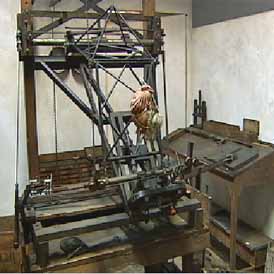Watt on earth is this?
As engineer James Watt’s fabled workshop is put on prominent display to the public for the first time, Channel 4 News goes inside the attic and asks if you can guess what is in there?

James Watt was the superstar engineer of his era. Born in 1736 in Greenock, he was best known for being the father of the industrial revolution.
He modified the previously inefficient steam engine, teaming up with entrepreneur partner Matthew Boulton to pioneer the device that powered the country’s rapidly expanding number of coal mines and mills.
He was so synonymous with steam power, that the unit for the conversion of energy, the Watt, was named after him.
When Watt died in 1819, the workshop at his home in Heathfield, Birmingham was locked and left untouched. It was later bought by London’s Science Museum in 1924, complete with floorboards, skylight and window and was been put on show in the subsequent decades.
But only now has it been restored to its former glory, complete with an impressive inventory of more than 8000 items that include the world’s oldest circular saw, a roller press and the original sandpaper that Watt used.
The restoration of the attic has meant researchers looked at the objects again. Many have intrigued and baffled scientists and engineers alike.
So, Channel 4 News poses this question to you – can you identify this piece of machinery above?
The machinery can also be seen on the left here in Watt’s original workshop in 1924.
 (credit SSPL / Science Musuem)
(credit SSPL / Science Musuem)
The answer: it’s a 3-dimensional copying device, intended for mass-producing sculptures, an invention that has resonances with groundbreaking developments in engineering and technology today.
Andrew Nahum, principle creator of technology and engineering at the Science Museum, told Channel 4 News that Watt was one of the foremost pioneers of his era.
“I think of James Watt as one of the first science entrepreneurs. He’s a one-man innovation centre, trying everything, trying chemistry, trying pottery, bleaching, surveying, even building civil engineering works like canals.”
Mr Nahum said that the attic workshop was discovered forty years after Watt’s death left in a largely untouched state.
“The dust was so thick they said it was like walking in soft snow and it was full of Watt’s entire life – Andrew Nahum, Science Musuem
“It’s an extraordinary space. It was identified in the 1860s by one of the founders of the science museum, Bennet Woodcroft, who scoured the country for the relics of the industrial revolution. He found the workshop undisturbed – the dust was so thick they said it was like walking in soft snow and it was full of Watt’s entire life. It was the space he worked in his eighties.”




